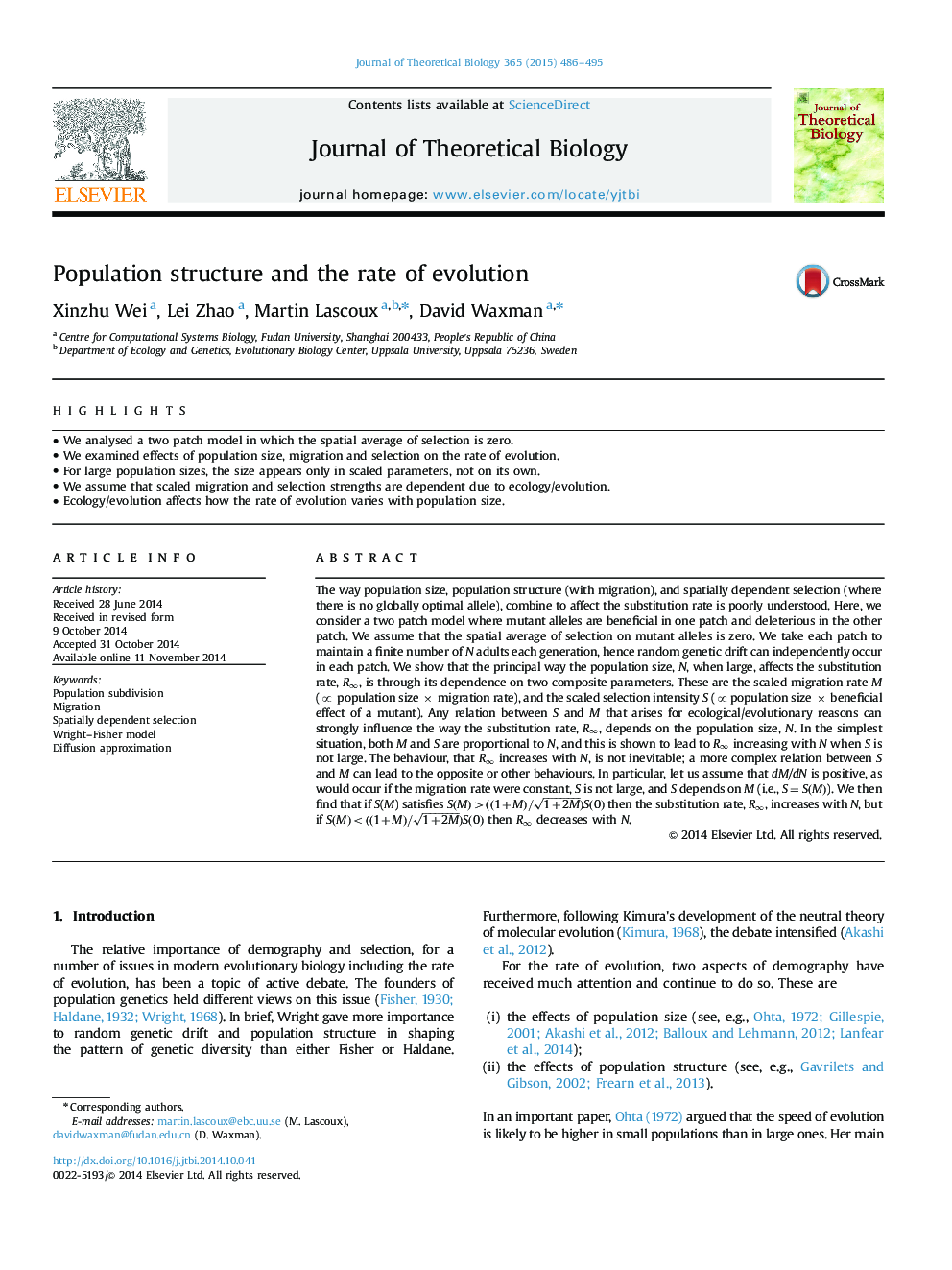| Article ID | Journal | Published Year | Pages | File Type |
|---|---|---|---|---|
| 6370067 | Journal of Theoretical Biology | 2015 | 10 Pages |
Abstract
The way population size, population structure (with migration), and spatially dependent selection (where there is no globally optimal allele), combine to affect the substitution rate is poorly understood. Here, we consider a two patch model where mutant alleles are beneficial in one patch and deleterious in the other patch. We assume that the spatial average of selection on mutant alleles is zero. We take each patch to maintain a finite number of N adults each generation, hence random genetic drift can independently occur in each patch. We show that the principal way the population size, N, when large, affects the substitution rate, Râ, is through its dependence on two composite parameters. These are the scaled migration rate M (â population size à migration rate), and the scaled selection intensity S (âpopulation size à beneficial effect of a mutant). Any relation between S and M that arises for ecological/evolutionary reasons can strongly influence the way the substitution rate, Râ, depends on the population size, N. In the simplest situation, both M and S are proportional to N, and this is shown to lead to Râ increasing with N when S is not large. The behaviour, that Râ increases with N, is not inevitable; a more complex relation between S and M can lead to the opposite or other behaviours. In particular, let us assume that dM/dN is positive, as would occur if the migration rate were constant, S is not large, and S depends on M (i.e., S=S(M)). We then find that if S(M) satisfies S(M)>((1+M)/1+2M)S(0) then the substitution rate, Râ, increases with N, but if S(M)<((1+M)/1+2M)S(0) then Râ decreases with N.
Related Topics
Life Sciences
Agricultural and Biological Sciences
Agricultural and Biological Sciences (General)
Authors
Xinzhu Wei, Lei Zhao, Martin Lascoux, David Waxman,
